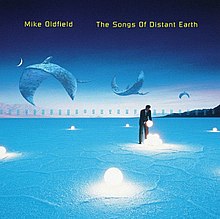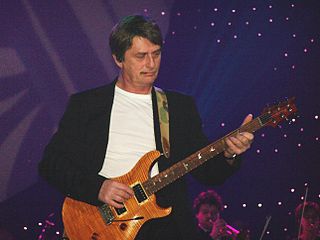
Michael Gordon Oldfield is an English musician,songwriter and producer best known for his debut studio album Tubular Bells (1973),which became an unexpected critical and commercial success. Though primarily a guitarist,Oldfield played a range of instruments,which includes keyboards and percussion,as well as vocals. He had adopted a range of musical styles throughout his career,including progressive rock,world,folk,classical,electronic,ambient and new age music.
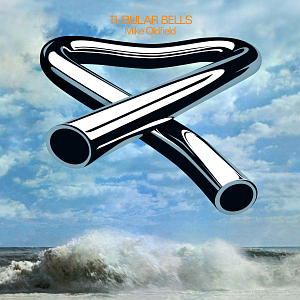
Tubular Bells is the debut studio album by the British musician Mike Oldfield,released on 25 May 1973 as the first album on Virgin Records. It comprises two mostly instrumental tracks. Oldfield,who was 19 years old when it was recorded,played almost all the instruments.

Tubular Bells II is the fifteenth studio album by English guitarist and songwriter Mike Oldfield. It was released on 31 August 1992 by Warner Music UK and is the successor to his debut album Tubular Bells (1973). It was his first album for Warner after having worked with Virgin Records for twenty years. Like its predecessor,Tubular Bells II charted at number 1 in the UK Albums Chart and spun off a top 10 single,"Sentinel".

Tubular Bells 2003 is the 22nd studio album by English musician Mike Oldfield,released on 26 May 2003 by Warner Music Spain. It is a digital re-recording of his 1973 album Tubular Bells,released almost 30 years earlier. This is the final album in the Tubular Bells series.
Sally Patricia Oldfield is an Irish singer-songwriter. She is the sister of composers Mike and Terry Oldfield.

Crises is the eighth studio album by English musician and songwriter Mike Oldfield,released on 27 May 1983 on Virgin Records. Oldfield started recording the album towards the end of his 1982 tour supporting his previous record,Five Miles Out. It marked a continuation of Oldfield's experimentation with more accessible music which began in the late 1970s;side one contains the 20-minute "Crises" and side two contains a collection of shorter songs which feature vocalists Maggie Reilly,Jon Anderson,and Roger Chapman. Oldfield produced Crises with drummer Simon Phillips,who also plays on the album.

Hergest Ridge is the second studio album by English musician and songwriter Mike Oldfield,released on 30 August 1974 by Virgin Records. The unexpected commercial and critical success of his debut album,Tubular Bells (1973),affected Oldfield,who decided against touring and avoided the press with his newfound fame. Instead,he retreated to Hergest Ridge on the England–Wales border and wrote the follow-up,which he recorded in 1974 at The Manor in Oxfordshire,with Tom Newman returning as co-producer. Similar to Oldfield's first,the album is a single composition split into two parts covering different moods and musical styles.

Ommadawn is the third studio album by English musician,multi-instrumentalist and songwriter Mike Oldfield,released on 31 October 1975 on Virgin Records.

Incantations is the fourth studio album by English musician,songwriter,and producer Mike Oldfield,released on 1 December 1978 by Virgin Records. Following the release of his previous album Ommadawn (1975),Oldfield moved into a new home in Bisley,Gloucestershire,where he set up a new recording studio. He started on a follow-up in 1977 which took form as a double album with one,side-long track on each side of the LP record. Oldfield wished to use real incantations in the music,but ended up using folklore as a loose running theme,such as Diana the Huntress. Though primarily instrumental,lyrical sections are adapted from works by poets Henry Longfellow and Ben Jonson. Oldfield completed the self-awareness seminar Exegesis while recording Incantations.

Platinum is the fifth studio album by English multi-instrumentalist and songwriter Mike Oldfield,released on 23 November 1979 on Virgin Records. It was Oldfield's first album to include shorter songs and music written by others. A modified version of the album was released in the United States and Canada and titled Airborn.
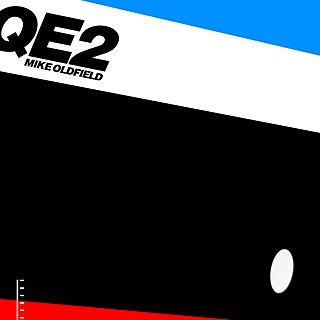
QE2 is the sixth studio album by Mike Oldfield,released in 1980 on Virgin Records. The album was named after the ocean liner Queen Elizabeth 2.

Amarok is the thirteenth studio album by English multi-instrumentalist and songwriter Mike Oldfield,released in May 1990 by Virgin Records. Oldfield originally conceived it as an "angry protest album",showcasing his musical technique. It is presented as a single sixty-minute track of continuous,uninterrupted but constantly changing music.
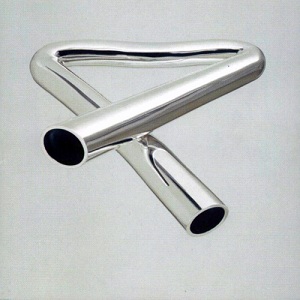
Tubular Bells III is the eighteenth studio album by English guitarist,songwriter,and producer Mike Oldfield. It was released on 31 August 1998 by Warner Music UK as the third instalment in his Tubular Bells album series. After relocating from England to the Spanish island of Ibiza in 1996,Oldfield started work on the album and gained inspiration to incorporate electronic music from the island's local bars and clubs.

The Millennium Bell is the 20th record album by Mike Oldfield,released in 1999. The theme of the album is a reflection of different periods of human history. The album borrows its name from the dawning of the 3rd millennium and from being the fourth installment of Oldfield's Tubular Bells series. It is the most recent entry in the Tubular Bells series to feature all-new material. It was the main work performed at Oldfield's concert for Berlin's new year celebrations on 31 December 1999.

Tres Lunas,stylized as Tr3s Lunas,is the 21st studio album by English musician and songwriter Mike Oldfield,released in June 2002 by Warner Music Spain. After his previous album The Millennium Bell (1999),Oldfield started work on his first release for MusicVR,a musical virtual reality project with simulator computer game elements and music. The idea developed to have the Tres Lunas MusicVR feature included as part of an album package,for which Oldfield wrote and recorded new music and signed with Warner Music Spain. Tres Lunas saw Oldfield explore electronic and chill-out music.

Earth Moving is the 12th record album by British musician Mike Oldfield,released in 1989. Unlike Oldfield's albums released prior to Earth Moving,the album contains no instrumental tracks.
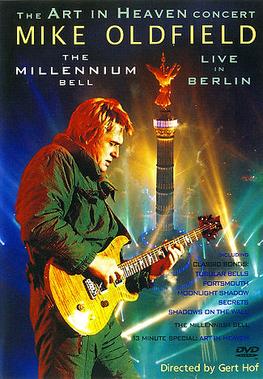
The Art in Heaven Concert is a Mike Oldfield concert video taken from 2000 New Year's night concert at the Victory Column in Berlin,Germany,which is currently available on both CD and DVD.

MusicVR is a virtual reality project created and developed by the musician Mike Oldfield. To date it has produced two standalone simulation games and inspired content for some of Oldfield's albums. As of January 2010 Tubular.net hosts the free downloads of the two games.

Jay Stapley is a British musician.

Man on the Rocks is the twenty-fifth studio album by British musician Mike Oldfield,released on 3 March 2014 on the Virgin EMI label. The album is Oldfield's second full album of exclusively songs with no long or instrumental pieces,the first being 1989's Earth Moving.

